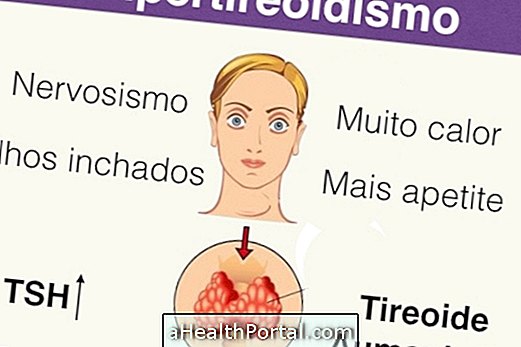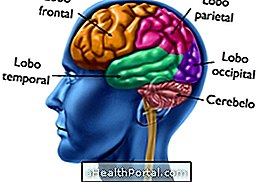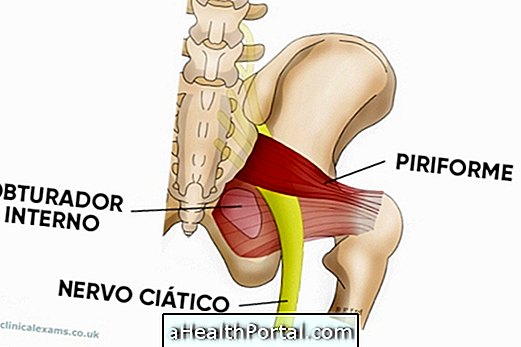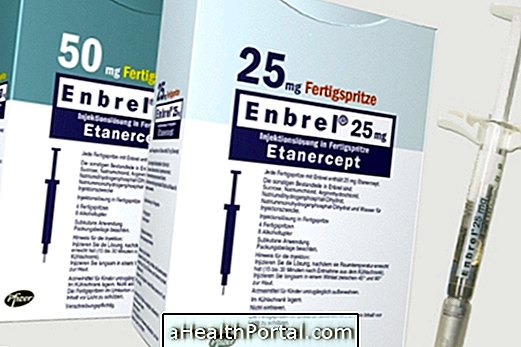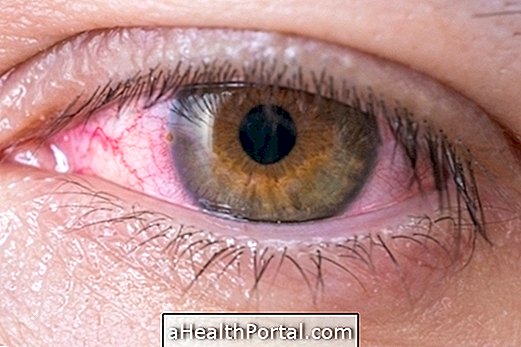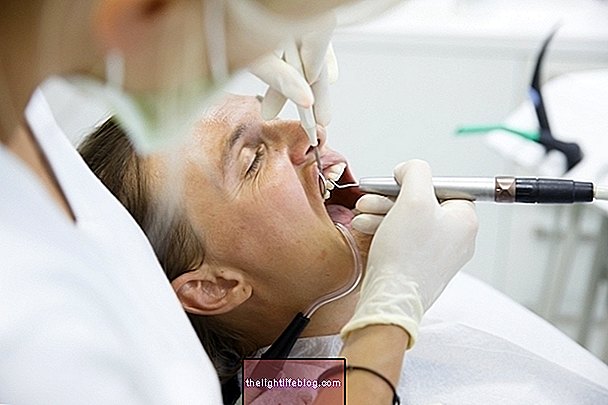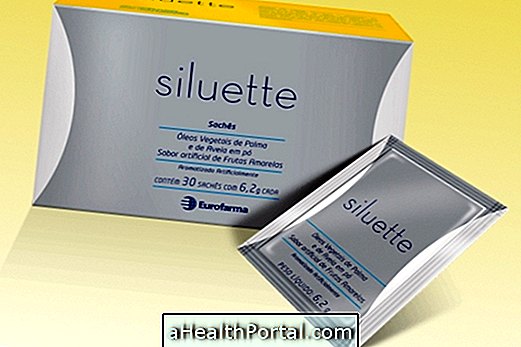Thyroid surgery is done to treat thyroid problems such as nodules, cysts, exaggerated thyroid enlargement or cancer, and can be total or partial, depending on whether or not the gland is completely withdrawn.
Usually, this surgery, known as thyroidectomy, is delicate because the veins, arteries and muscles are essential for life. However, there are no complications, even in cases of cancer, with uncommon changes in voice or bruising.
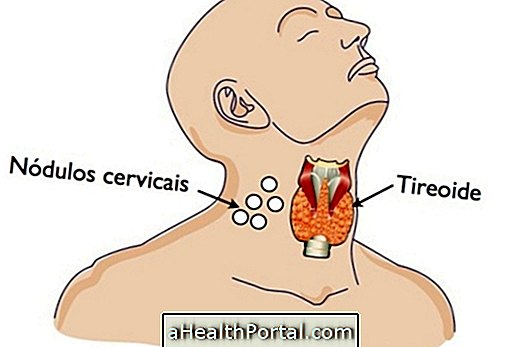
The recovery of the surgery is simple, being necessary to avoid making efforts not to provoke swelling and bleeding at the place of the cut, leaving a scar in the neck.
Types of Surgery to Remove Thyroid
Thyroid surgery is done with general anesthesia and during the operation, which takes about 2 hours, the doctor makes a cut in the neck allowing to observe and remove the thyroid.
Generally, prior to thyroid surgery, one should do 8 hours of fasting and not take some medications in the previous 10 days, such as AAS, Bufferin or Mejoral, for example because they increase the risk of bleeding during surgery and postoperative may impair healing. The main types of surgery are:
- Total thyroidectomy: It consists of completely removing the thyroid, requiring the necessity of hormonal replacement.
- Lobectomy: Consists of removing only one side and also the isthmus, which is the part that joins the two sides, leaving half thyroid functioning normally. It may be indicated for papillary or follicular thyroid cancer, and there is usually no need for hormone replacement.
- Cervical emptying: In some cases, in addition to removing the thyroid, it may be necessary to remove the lymph nodes near the thyroid and cervical when they are affected or to avoid them, especially in case of thyroid cancer of the spinal or anaplastic type. In the case of follicular or papillary cancer the doctor may not see the need for cervical emptying if the biopsy indicates that they are not affected.


In most cases, one can return home the next day, being hospitalized for 1 day, since it is rare for complications to appear. However, it is not possible to study or work the first week after surgery.
The doctor can also decide if it is necessary to perform the treatment with radioactive iodine, which serves to completely eliminate any trace of malignant cells. Learn all about Radioactive Iodine.
Also watch the following video and see which food is best to do during treatment with radioactive iodine:

How is recovery after removing thyroid
The postoperative period of thyroid surgery lasts about 15 days and during this time physical exertion such as running or intense domestic activities should be avoided to prevent the development of swelling and bleeding at the site of the cut. However, it is not necessary to rest in total, being able in most cases to walk, to work and to move the neck in the week following the operation.
After leaving the operating room it is normal to have a drain on the neck to remove excess fluid with blood and avoid bruising and as it is normal to feel some pain the doctor may indicate the use of analgesics and anti-inflammatories such as Paracetamol or Ibuprofen and eating liquid and soft foods to lessen the discomfort of food in the throat.
In addition, a dressing is applied to the neck to avoid contact with bacteria and dirt and to protect from the sun where the cut was made, which should not be wet. Usually the patient goes home with the dressing, which should be removed about 3 days after the surgery in the hospital, and the stitches are removed when they are visible.

What happens after you remove the thyroid
Generally, thyroid surgery does not bring complications, but the most common consequences include:
- Sore throat and cough, which can cause difficulty in eating and, which usually reduces after 1 week, being related to inflammation of the throat;
- Voice alterations, such as hoarseness and fatigue in speech that usually passes spontaneously after a few months, and in some cases voice training is required;
- Decreased levels of calcium in the blood, because near the thyroid are the parathyroid glands that produce a hormone known as PTH responsible for regulating the level of calcium in the blood;
- Hematoma in the neck that can cause pain and swelling in the neck.
Because a cut is made in the neck, it is normal to have a thin scar that can vary between 3 to 15 cm.
Consequences - How To Live Without Without Thyroid
It is possible to live without thyroid because the hormones produced by this organ can be replaced by pills in calcium and vitamin D tablets, such as levothyroxine or Synthroid, for example, recommended by the endocrinologist who have to be taken fast in the morning. See which Thyroid Remedies your doctor can recommend.
After removing thyroid completely, these medications have to be taken for a lifetime, to keep the hormone level stable and avoid symptoms such as tingling and cramps. These remedies can begin to be taken after about 20 days of surgery.
Watch the following video and see some tips that can help people without thyroid to live better:

When only half of the thyroid is removed, it is not always necessary to do this hormonal replacement because the remaining half can adjust to produce the amount of hormones that the body needs. So the doctor should ask for blood and ultrasound tests to check the result of the surgery and how the levels of these hormones are in the bloodstream about 1 month after removing part of the thyroid. During this waiting period, the person should be aware of symptoms of changes in the thyroid such as menstrual changes, cramps, leg tiredness or tingling sensation. Check out all the symptoms of thyroid problems.
Surgery price
Thyroid surgery can be done by SUS, and it is free. However, it can be done in private clinics and its average cost is 5 thousand reais, depending on the place where the surgery is performed and the length of stay.
Check out thyroid fat?
By completely withdrawing the thyroid and not doing the hormone replacement there may be hypothyroidism, and one of the characteristics of this is weight gain and body swelling. Thus, one must take the remedies to replace the hormones that the thyroid produced to maintain proper weight and maintain other body functions, such as properly controlled temperature regulation. So whenever the person withdraws the thyroid completely should take the thyroid remedies for life.
Removing only half of the thyroid can also lead to weight gain when half of the thyroid is not able to produce the hormones that the body needs. Therefore, in addition to doing the thyroid exams monthly, it is necessary to observe if symptoms related to hypothyroidism arise. Know the 5 exams that evaluate the thyroid.
If the doctor indicates the treatment with Radioactive Iodine after withdrawing the thyroid, it is not possible to start taking the thyroid hormones, so during these 30 days of interval between procedures it is common to feel swollen with a headache and lack of concentration, but this time without drugs is important to increase the effectiveness of radioactive iodine therapy, which can completely eliminate malignant cells. After this treatment, your doctor may tell you to take the thyroid medicines, and the unpleasant symptoms should disappear within a few days.



